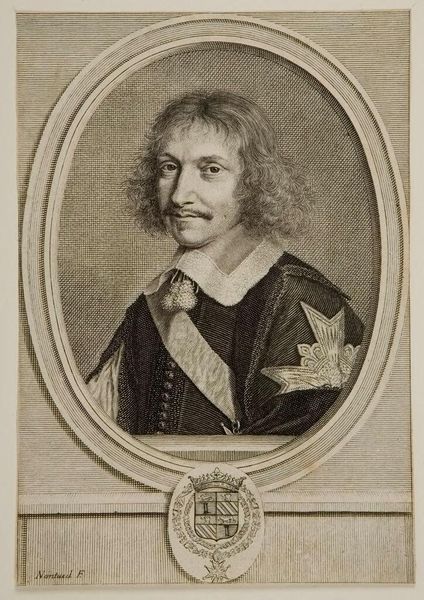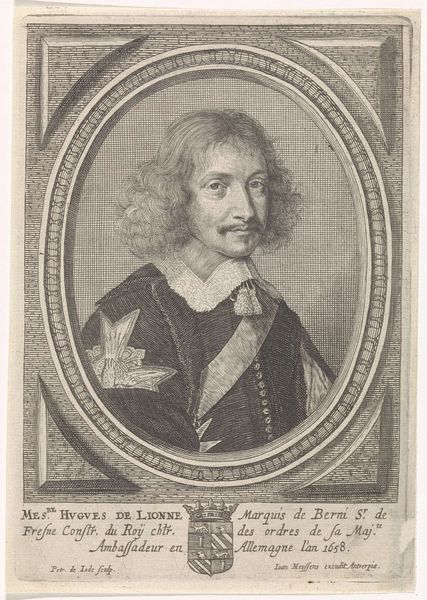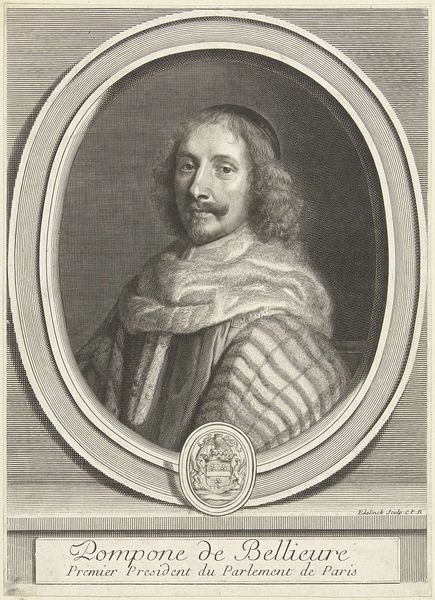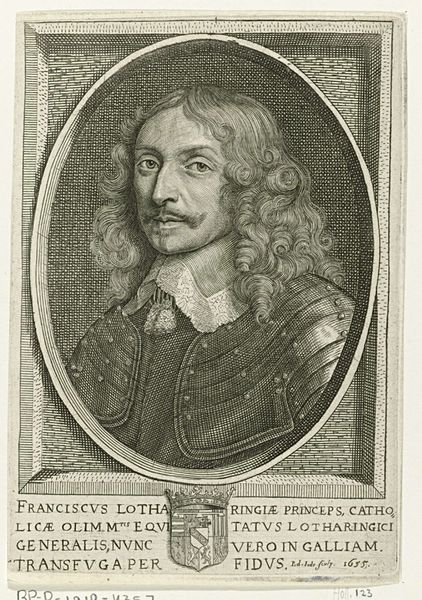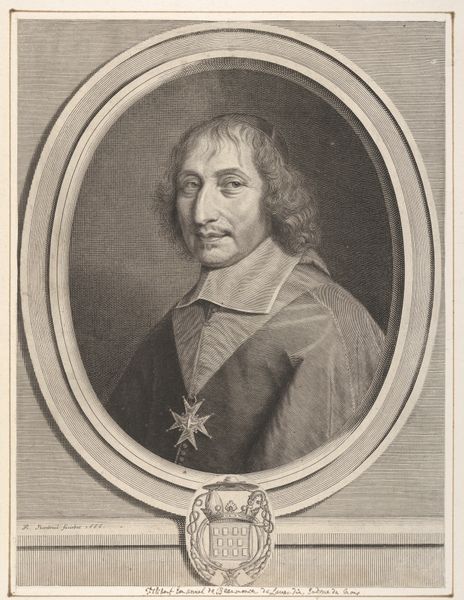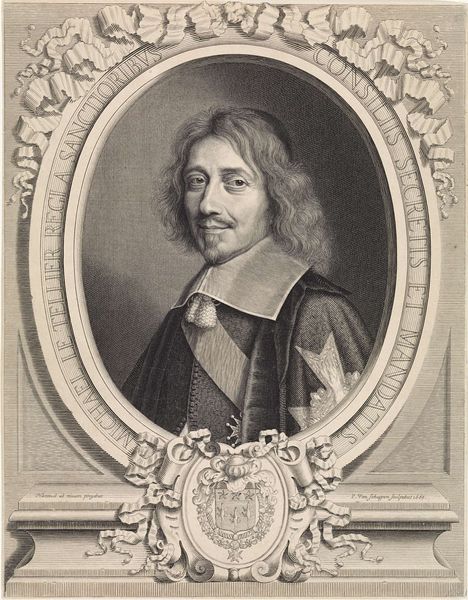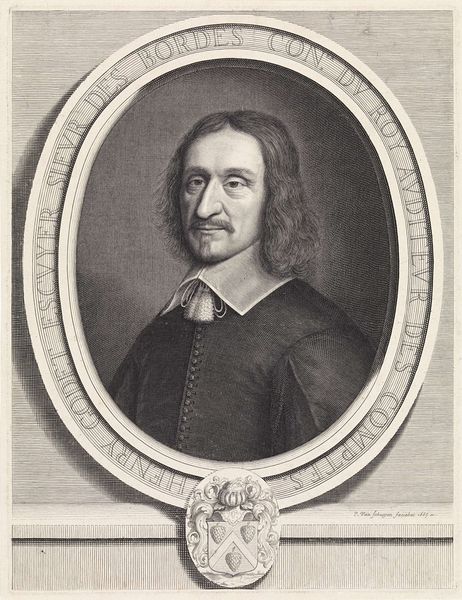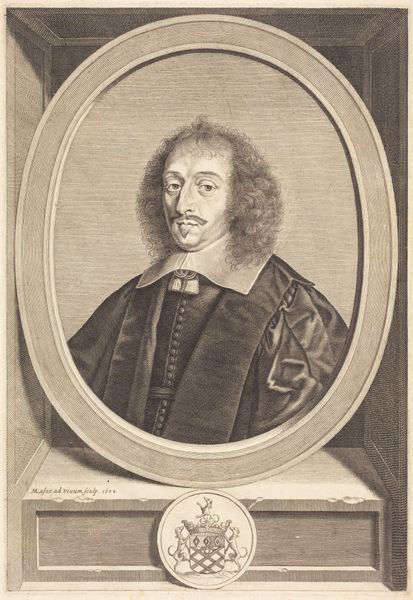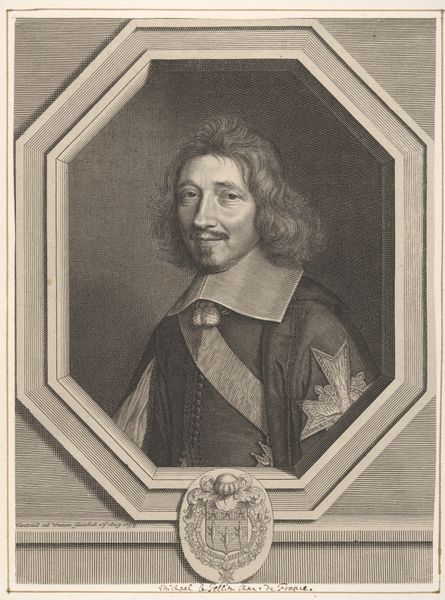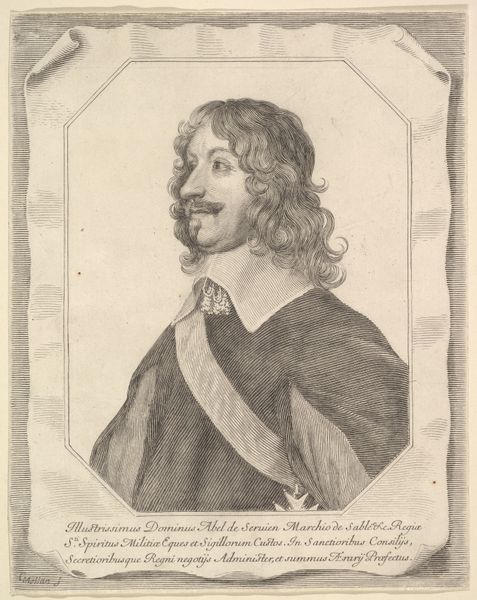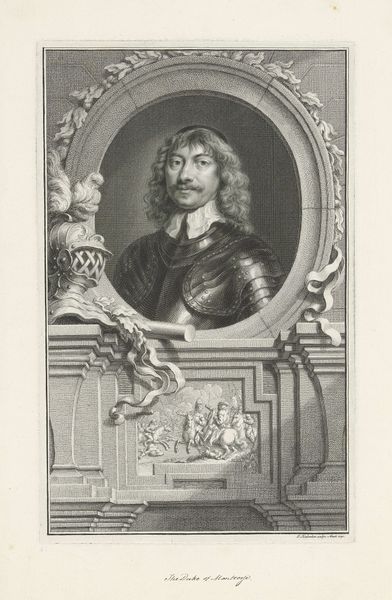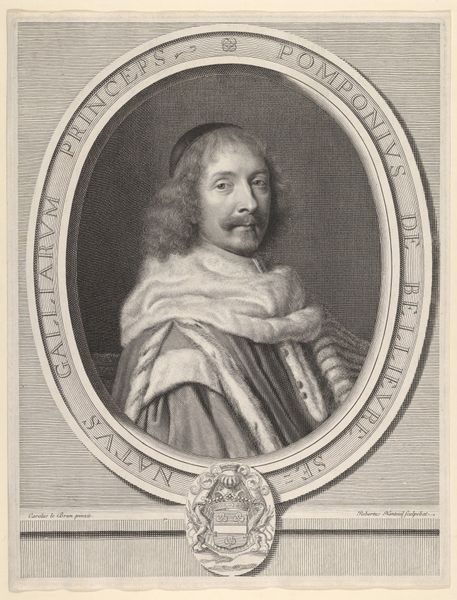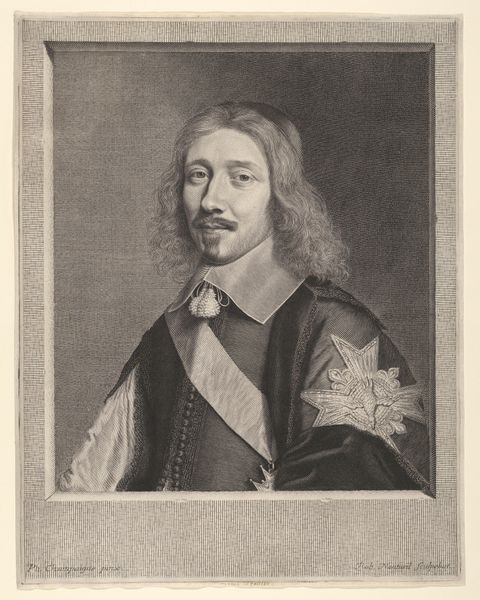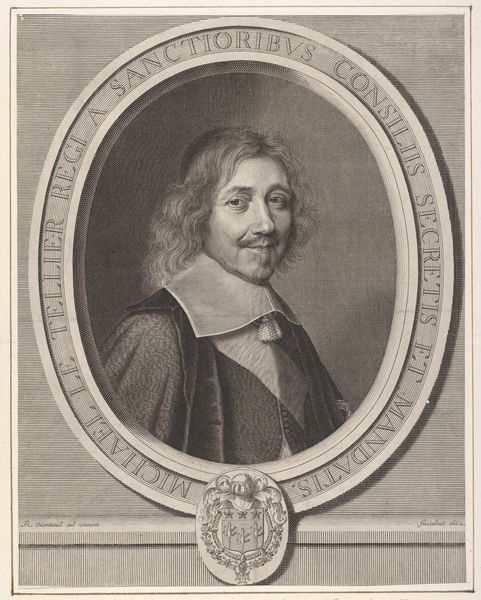
drawing, print, engraving
#
portrait
#
drawing
#
baroque
# print
#
11_renaissance
#
line
#
academic-art
#
engraving
#
miniature
Copyright: National Gallery of Art: CC0 1.0
Editor: Here we have Robert Nanteuil’s "Hugues de Lionne," an engraving from 1655. The fine lines and detail are just incredible! It has a very stately and refined presence to it. What draws your eye in this piece? Curator: Primarily, the meticulously rendered textures, evident in the sitter's hair, lace collar, and the fabric of his garments. Note how the engraver has deployed various techniques of line, hatchings, and stipples to create volume and material differentiation. Do you observe the economy of the framing oval and how it affects the composition? Editor: Yes, the oval is very clean, highlighting the intricacy inside it. It's quite clever. It keeps my focus entirely on the man. Curator: Indeed. The very calculated use of the portrait's limited space serves to amplify its formal qualities. Consider, too, the inscription beneath the portrait: does the integration of text and image serve to merely identify the subject, or does it also function as a structural element in the composition? Editor: I see your point! It acts almost as a base, anchoring the visual weight of the portrait itself. Curator: Precisely. The work invites careful attention to detail, appreciating the formal interplay of lines, shapes, and textures as the foundation for any potential meaning. Editor: I definitely have a greater appreciation for how every element contributes to the overall design now! Curator: And I find renewed appreciation for how even seemingly minor contextual details affect the whole.
Comments
No comments
Be the first to comment and join the conversation on the ultimate creative platform.
